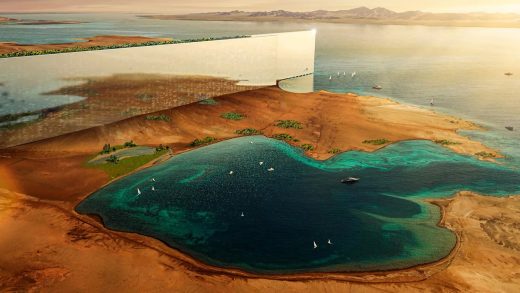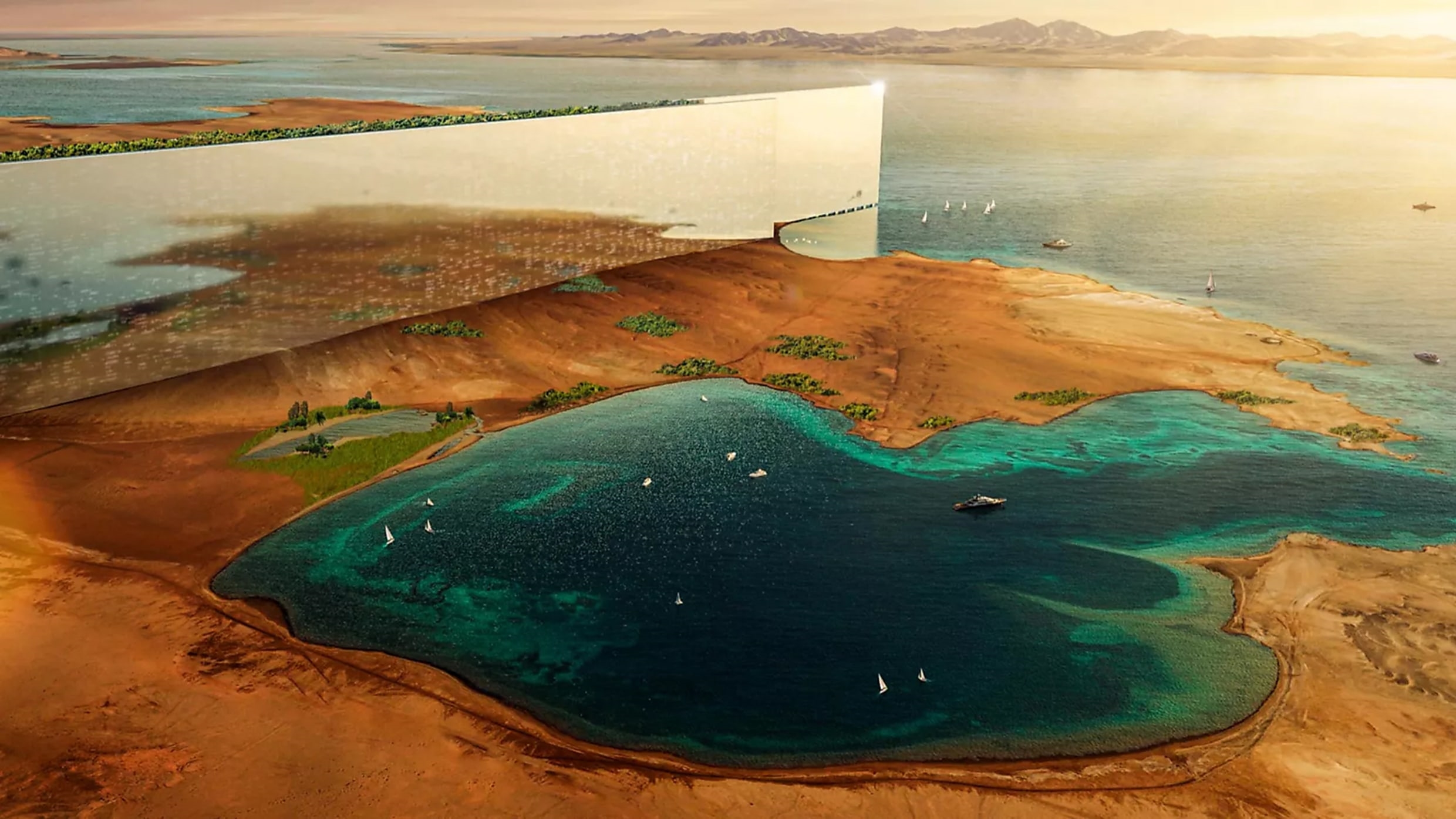There are thousands of cities in the world, and there’s a reason none is in the shape of a line
Somewhere in the Saudi Arabian desert, construction crews are hard at work on the longest, skinniest, tallest—and some might even say, most hubristic—city in human history. The Line really is underway, if the recent footage released by Neom, the special economic zone/development agency behind the project, is to be believed.
How all of those bulldozers and pile drivers toiling away in the sand will contribute to the city’s zero-emissions status is one of many outstanding questions about The Line. But recent weeks have demonstrated that the project is, at the very least, more than a passing whim.
Much has been written about the ethical, environmental, and economic merits of The Line. But now that shovels are in the ground, perhaps it’s time to take a more serious look at the urban planning of this “model city.”
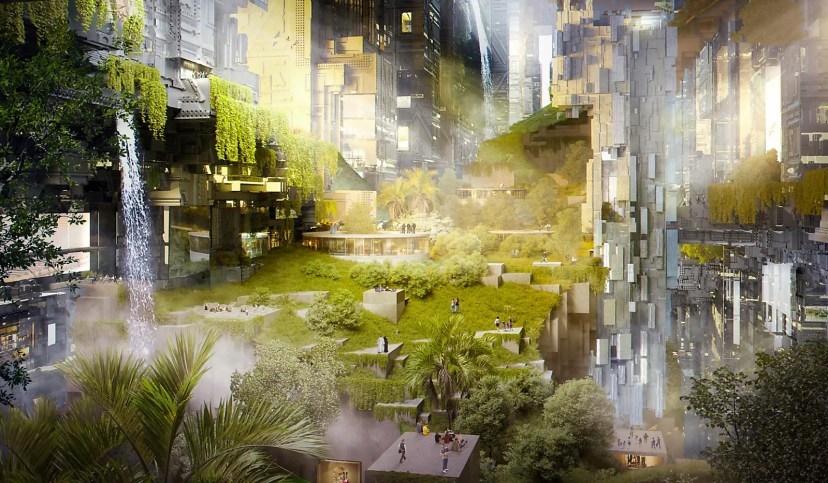
The Line follows in the wake of a long history of utopian linear cities that haven’t worked out as planned. This is not just a historical quirk. A pair of recent academic studies show why a line is, by its very shape, a suboptimal form for a city.
“We know what is the optimal state for a city: it’s round, it has dense constructions, and it actually allows people to walk to most of their destinations,” says Rafael Prieto-Curiel, a mathematician and postdoctoral research fellow at the Complexity Science Hub in Vienna. A line is “the worst possible form for a city.”
As model cities go, The Line is as extreme as you can get. Designed as a single megastructure of super-tall high-rises sealed together by exterior walls, the linear city will stand more than 1,600 feet above sea level, just a tad shorter than New York’s One World Trade Center (not including its antennae spire). Occupying 13 square miles, the city’s footprint will stretch 106 miles in length and just 656 feet wide. It is intended to ultimately accommodate 9 million people, meaning that, at full capacity, The Line will be about 10 times more dense than Manhattan.
Its unusual form aside, the city is imagined much like other urban centers with apartments, offices, restaurants, retail shops, parks, and civic spaces strung and suspended right on down the line—but with no roads or cars. High-speed rail service will be provided, said to travel end to end in 20 minutes, and residents will be able to access daily essentials within a 5-minute walk. High Line-style walkways will create multiple “ground floors” across different levels of the megastructure. And communal elevators will offer high-speed vertical transportation. With the absence of cars, The Line will achieve net-zero emissions by consuming 100% renewable energy. Water will come by way of desalination from the Red Sea.
Renderings of The Line show it encased in a sort of mirror, or cloak of invisibility, reflecting back the barren mountains and sky. Interiors are imagined as lush with vegetation, though it’s unclear how natural light will reach the lower floors—or how residents will access the stark desert landscape beyond. These visions come by way of Hollywood, literally: Neom has worked with set designers from The Dark Knight trilogy, I Am Legend, and Guardians of the Galaxy.
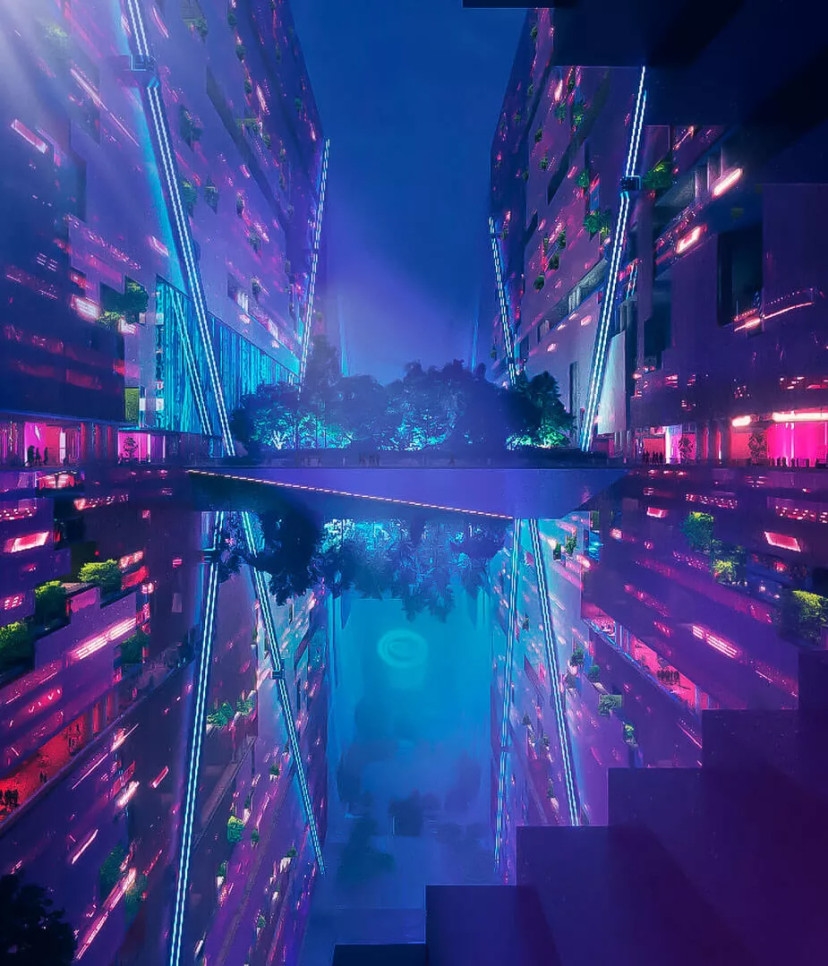
Another inspiration for The Line is space-age design. In a documentary on the project released in June by Discovery UK, Neom CEO Nadhmi Al-Nasr compares The Line to the Apollo Missions. “NASA and Neom are a twin, in a way, 60 years apart,” he says. For his part, Mohammed bin Salman, crown prince and prime minister of Saudi Arabia, says in the film that The Line is “competing with Miami.”
On an urban-planning level, the most direct antecedents to The Line come out of the conceptual architecture of the 1960s—a moment when architecture began to reckon with its world-girdling power using the imagery of science fiction. Cited as a major inspiration in the documentary is Plug-In City, a fully modular, urban superstructure concept developed in the early 1960s by the London architectural collective Archigram. (Archigram founder Peter Cook is a Neom consultant.) The Line’s designers have also favorably compared their project to The Continuous Monument, a critical conceptual work from Italy’s Superstudio in the late ’60s, imagining a world devoured by blank, boxy megastructures.
“Seeing the dystopias of your own imagination being created is not the best thing you could wish for,” Superstudio member Gian Piero Frassinelli said of The Line in a 2021 interview.
“It’s interesting how mega projects like this go in and out of fashion with architecture folks,” says Stewart Hicks, an associate professor of architecture at the University of Illinois, Chicago, and a YouTuber who has made multiple videos about The Line. The project resembles these 1960s’ concepts “minus the self-awareness and self-consciousness,” he says.
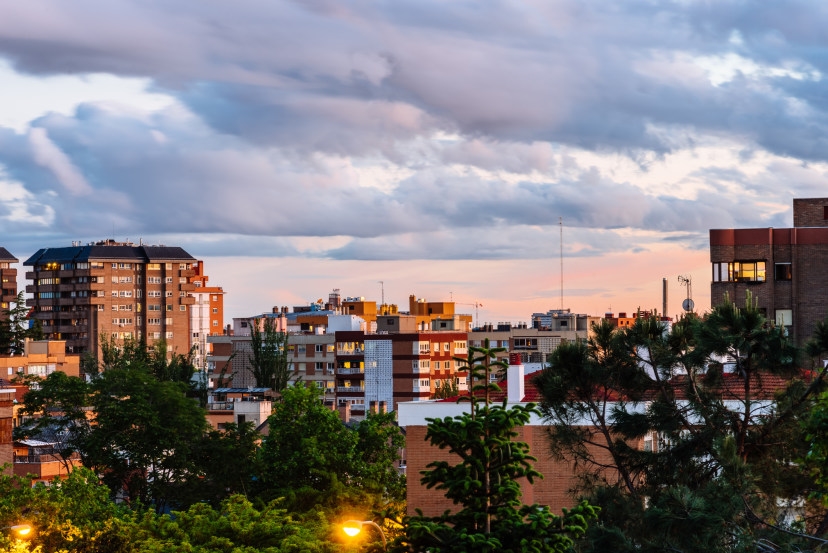
But to see what happens when linear cities are attempted in real life, one must travel further back in history. There’s the Ciudad Lineal, outside of Madrid, envisioned in the early 20th century as a 31-mile city strung along an electric streetcar route. Only 3 miles were ultimately built, and the city’s linear form was quickly swallowed up and rendered unrecognizable by Madrid’s urban sprawl. Several visionary designers in the former Soviet Union also attempted to build linear cities. One constructivist theorist, Mikhail Okhitovich, pushed a little too hard for his linear design of Magnitogorsk, and was executed by Stalin in 1937.
The most famous, most fully realized linear city is Brasilia, designed by Lucio Costa in the 1950s. The city is laid out along two lines, forming the shape of a cross or an airplane. In the early years, this urban-development pattern was strictly adhered to by government fiat. But as soon as control was relaxed, developers began filling in the areas around the original planned city in a more or less radial form.
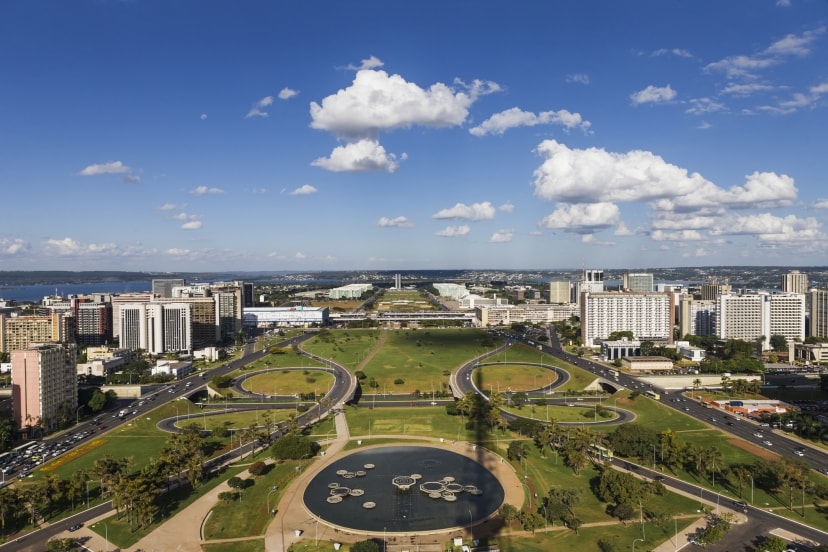
“These visionary linear cities are developed by architects who, generally speaking, don’t have any real interest in how cities actually work. They’re largely interested in the aesthetics of cities,” says Michael Batty, a professor emeritus of urban planning at University College London, who authored a paper exploring the historical antecedents to The Line.
This history “essentially demonstrate[s] the futility of building cities whose form ignores the functions that determine how we locate and move in the real city,” Batty writes in the paper. “Cities have a natural equilibrium which will always assert itself once the population is able to make its own locational decisions over where they might live and work and how they might interact with one another.”
In other words, people and investment naturally gravitate toward the center of cities, which provides the maximum amount of access to the maximum number of destinations. By existing in only two dimensions, linear cities must somehow prevent the development of valuable, highly accessible land just off the strip, as it were. And it’s never been successfully done.
Another recent paper, coauthored by Complexity Science Hub’s Prieto-Curiel and Dániel Kondor, uses math to explain how these principles play out in The Line. Their research question, according to Prieto-Curiel: “Is this a careful design for novel buildings and new urban forms, or is it just a set of pretty renderings to put on Instagram?”
Linear cities like The Line cancel out the inherent benefits of density, Prieto-Curiel and Kondor find. Any two residents of The Line, once it’s complete, will be an average of 41 miles apart from one another, and any given resident will live within walking distance of just 1.2% of the population. And according to their calculations, any given trip, even with super-fast trains, will take an average of 60 minutes, not the 20 minutes claimed in The Line’s literature.
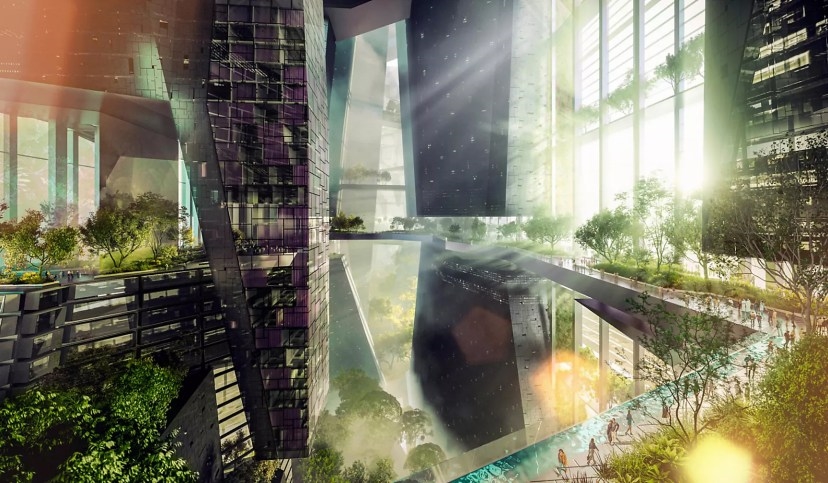
The Line is just 2% of the physical size of Johannesburg, a city with a similar population. But any two residents of Johannesburg are two times closer to one another—approximately 20 miles—than residents of The Line will be.
Another problem with The Line’s design is the natural agglomeration of people and investment at the center of cities. As a linear city with, presumably, uniform density along its length, The Line lacks a natural focal point. But Batty believes a kind of center would emerge nonetheless.
“It’s got to start somewhere, and wherever it starts, it will gain some agglomeration economies,” Batty said. In theory, this central place will command higher rents, support high densities, and require increased transportation and infrastructure services. But on The Line, as far as it’s been laid out in public, such a place cannot exist.
Batty emphasizes that he finds The Line interesting as an “architectural visionary experiment. . . . It’s the accessibility issues that are more perplexing.”
Despite taking issue with the form of The Line, University of Illinois’ Hicks thinks it also could offer valuable lessons for architecture and urbanism. For example, the city could possibly yield innovative solutions to the problem of vertical mass transit, which is becoming more important as cities grow increasingly dense.
“Whether or not The Line itself is something that should be built, I doubt it,” says Hicks. “But I think that the exercise of thinking about these things, taking them seriously, and working through them is valuable.”
(33)

